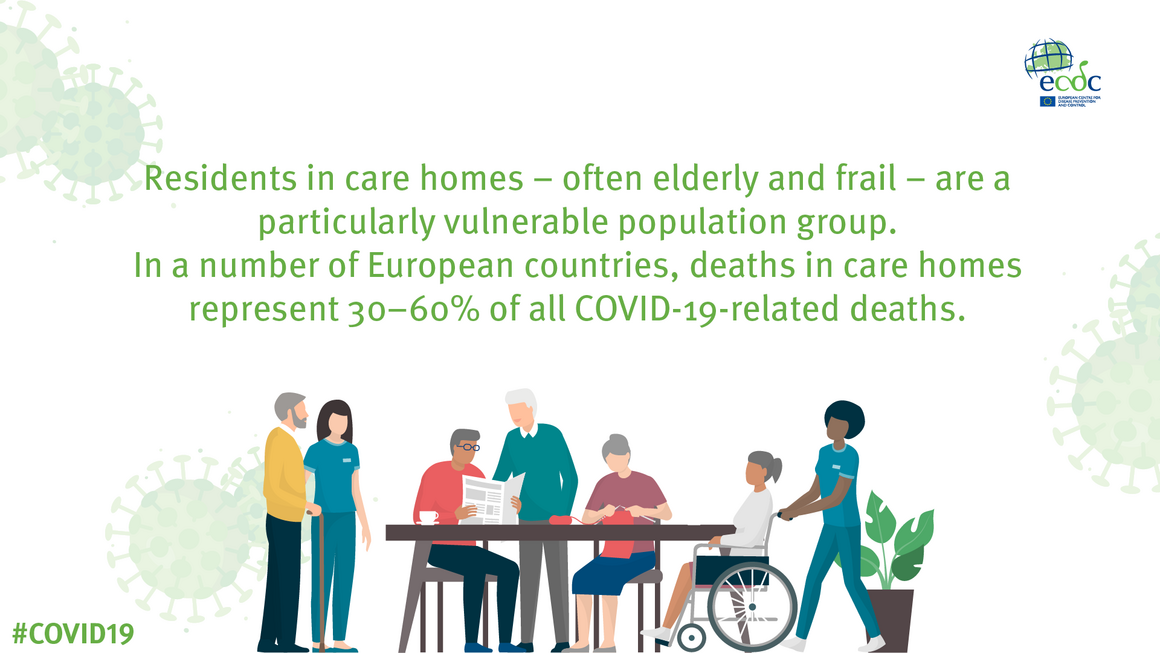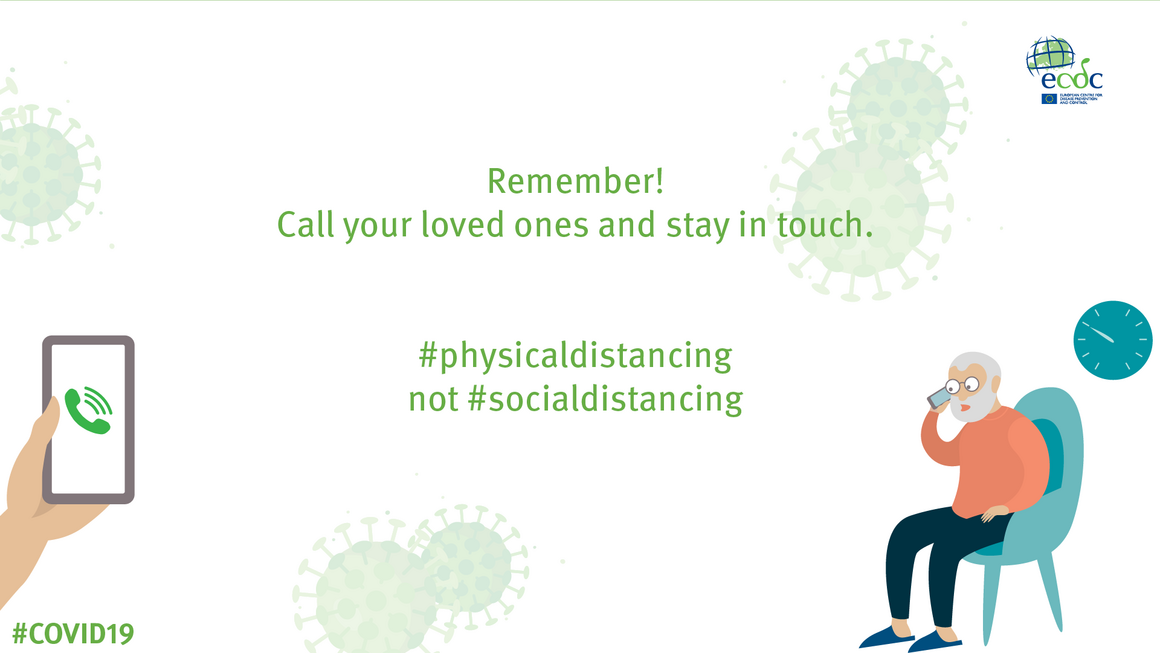High-risk groups for COVID-19
This page contains general advice. Please follow national health authorities' detailed recommendations.

High-risk groups for COVID-19 are:
- People aged 60 years and older;
- those living in long-term care facilities; and
- people with underlying health conditions, such as hypertension, diabetes, cardiovascular disease, chronic respiratory disease and weakened immune systems.
It has been estimated that up to 30% of the population of the EU/EEA is either over 60 years old or has one of the underlying conditions associated with COVID-19 risk.
Although most people with an elevated risk of severe COVID-19 disease live independently or with family, some reside in long-term care facilities, where infection tends to spread easily.
Countering the risk of physical distancing for risk groups

Physical distancing has been recommended as a preventive measure for those at a higher risk of developing the disease severely.
However, physical distancing can cause a lack of meaningful social connection and result in a reduced quality of life. It increases the risk of depression, feeling lonely and experiencing other mental health issues. While minimising COVID-19 exposure, physical distancing may also prevent older adults and other risk groups from seeking or receiving social and medical care for any existing health issues, from exercising, or from shopping and running errands. It is important to balance the need for physical distancing with the importance of ensuring sufficient social contact/physical activity and promote the overall well-being of individuals.
What could be done? See the Guidance on the provision of support for medically and socially vulnerable populations in EU/EEA countries and the United Kingdom during the COVID-19 pandemic
What is the risk of COVID-19 to the population with defined factors associated with severe disease outcome?
The current risk for people at higher risk of severe disease in the EU/EAA and the UK is defined in the latest ECDC risk assessment
Socially vulnerable populations
Due to their living conditions, some individuals are much more vulnerable than the rest of the population to the consequences of the public health measures that have been imposed to control the spread of the virus. This may have exacerbated their already challenging social and economic life situations.



